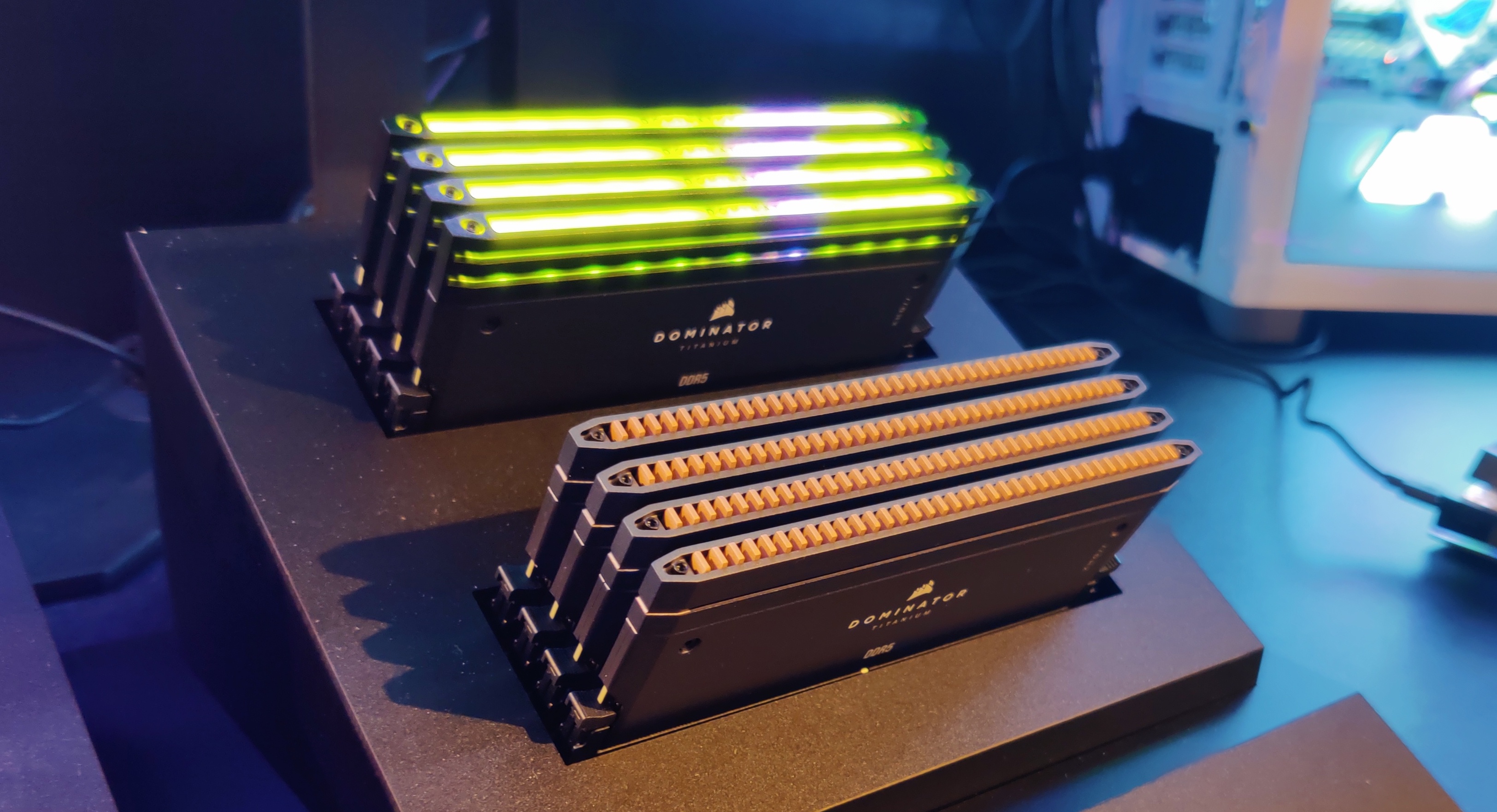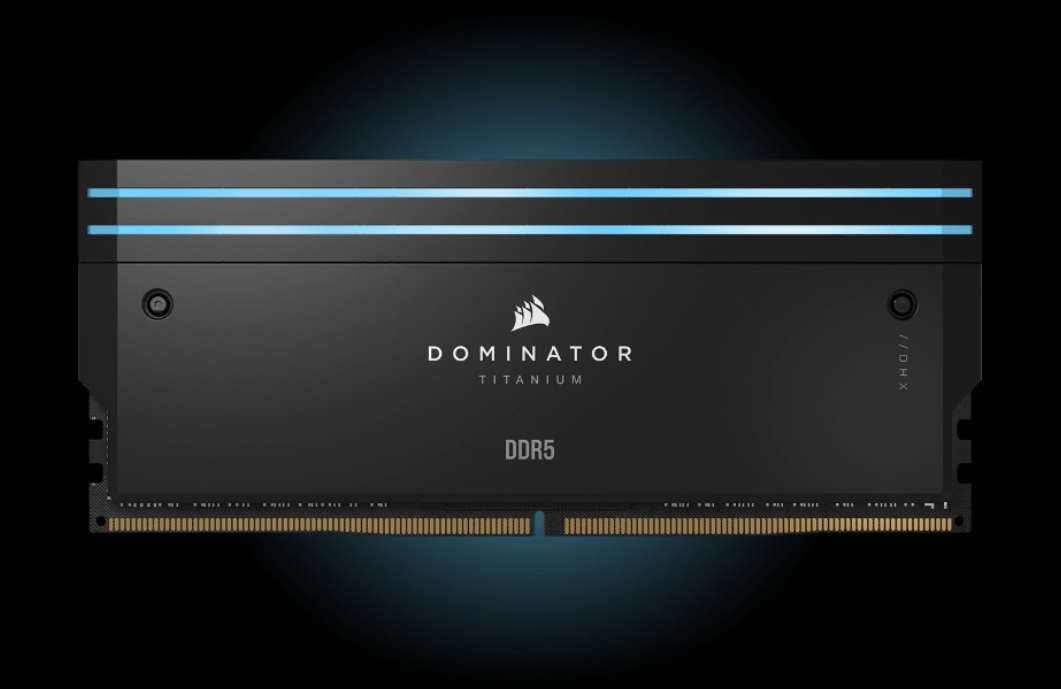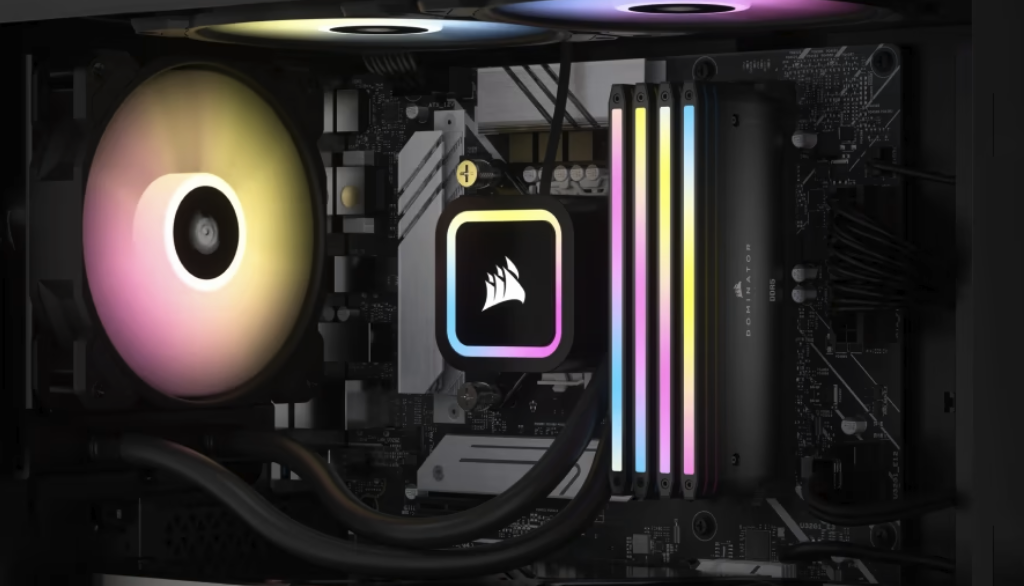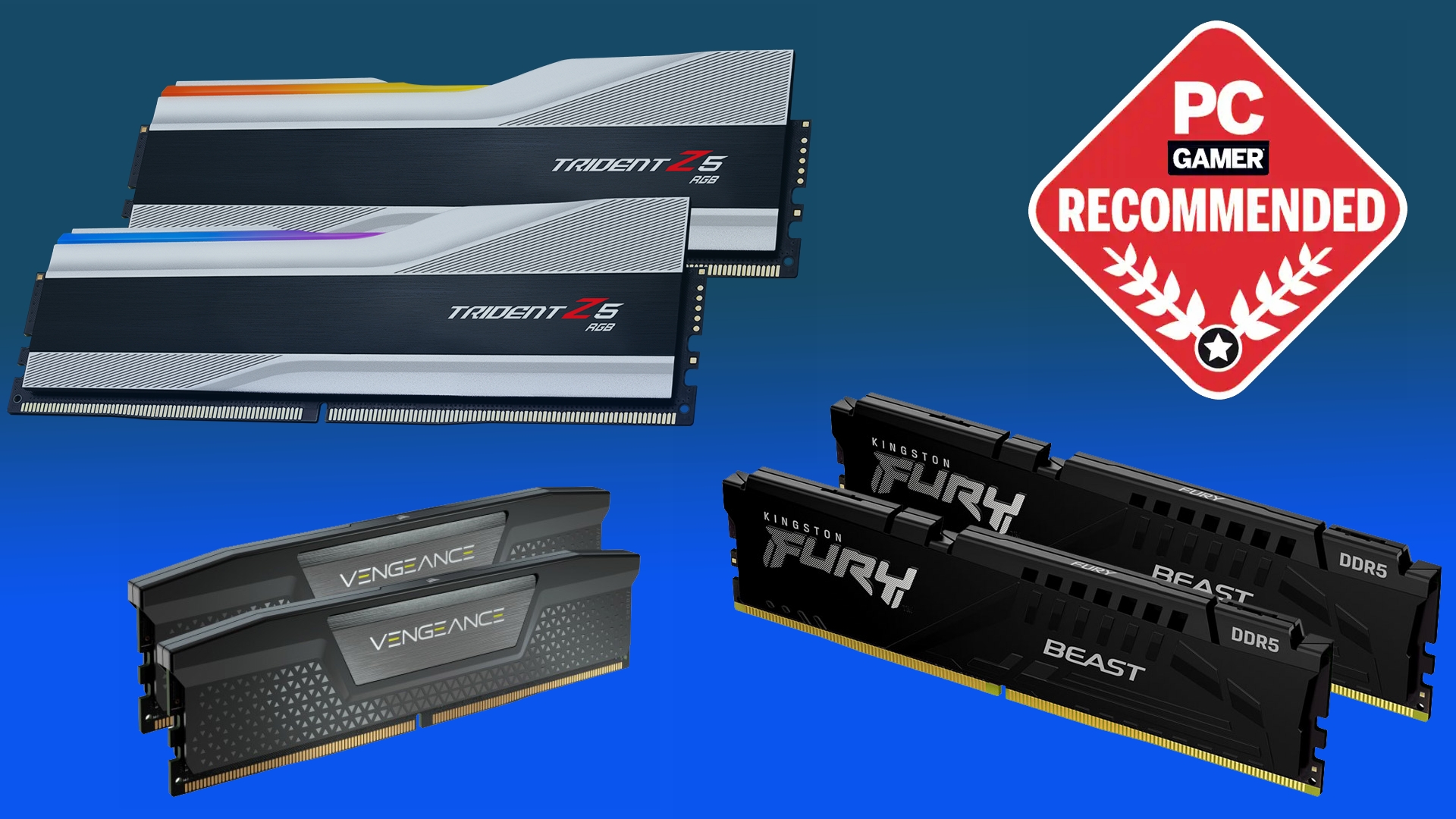3D print your own DDR5 (kinda) with Corsair's new Dominator kit
Removable top bars support 3D printed additions.

System memory is a question of style not just speed. At least, that's the thinking behind Corsair's new Dominator Titanium DDR5 kits, which have removable top bars and support 3D-printed customisation.
The speed bit is covered off by launch frequencies of up to 8,000MT/s, which should cover most needs and then some. It's about as quick as DDR5 currently comes. The style? Well, that's the unusual bit.
As standard, these are particularly clean and slick looking memory sticks courtesy of the now-traditional Dominator machined metal cladding. They also run nice and cool thanks to DHX dual-path heat exchange technology.
But staying traditional isn't the idea. Instead, the new Dominator Titanium DIMMs support fully replaceable top bars.
For starters, you can replace the factory-fitted RGB-lit top bars with a Fin Accessory Kit inspired by those Corsair Dominator DIMMs of old. Not that the RGB bars are too shabby, what with 11 programmable LEDs.


Corsair says system-wide RGB lighting effects are possible when the DIMMs are combined with the CORSAIR iCUE Murals, including synchronised lighting that matches your music, games, or movies.

Best DDR5 RAM: the latest and greatest
Best DDR4 RAM: affordable and fast
Corsair has also told us that customers can 3D print their own top bars. It's not yet fully clear how much support is provided for that, but we assume the required specs and 3D models and files are provided to allow a precise fit when DIYing your own top bars.
The biggest gaming news, reviews and hardware deals
Keep up to date with the most important stories and the best deals, as picked by the PC Gamer team.
Whatever, Corsairs reckons the kit supports both Intel XMP 3.0 when paired with 12th and 13th-Gen Core processors or AMD EXPO for Ryzen 7000 CPUs. So, easy overclocking in just a couple of clicks on compatible platforms should be on the menu.
For the record, the new Dominator Titanium will be available in capacities up to 192GB (4x 48GB) and with CAS latencies as low as 30 on some SKUs. There's no word on pricing for now, but they probably won't be cheap when they do go on sale in July.

Jeremy has been writing about technology and PCs since the 90nm Netburst era (Google it!) and enjoys nothing more than a serious dissertation on the finer points of monitor input lag and overshoot followed by a forensic examination of advanced lithography. Or maybe he just likes machines that go “ping!” He also has a thing for tennis and cars.

